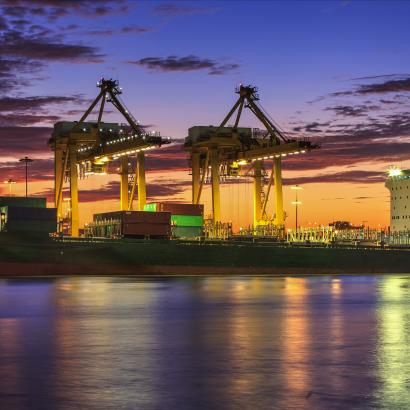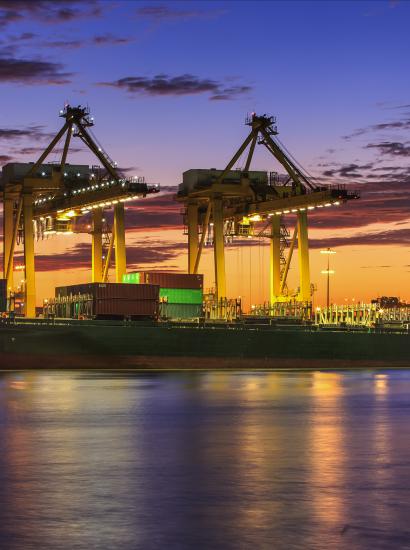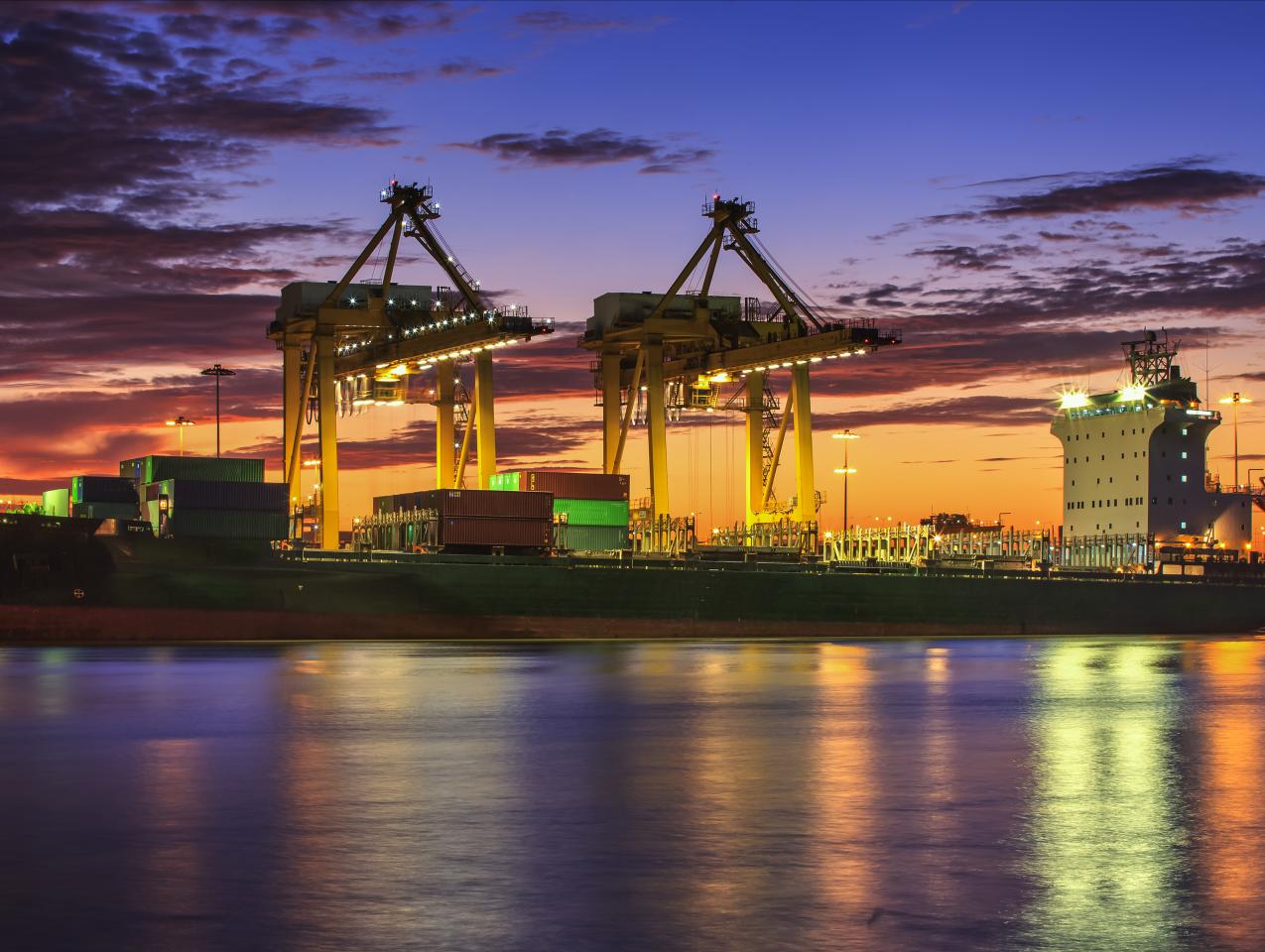This essay is based on the working paper “Romer or Ricardo?” by Chang-Tai Hsieh, Peter J. Klenow, and Kazuatsu Shimizu.
Economic growth often takes the form of improvements in existing products by incumbent firms. Think of successive improvements in generations of Ford F-Series trucks or Samsung computer memory chips. This fact is consistent with incumbent firms’ being the dominant spenders on research and development and the main source of patents.
Growth can also occur through creative destruction, a notion going back at least to economist Joseph Schumpeter. Here competitors introduce better or cheaper versions of existing products that bid away market share from existing producers. For example, Apple iPhones took over much of the smartphone market from Nokia and Research in Motion (Blackberry), and Apple in turn has yielded a substantial portion of its market share to Samsung and Xiaomi phones.
In many cases the new products are not close substitutes for existing varieties, so incumbents survive alongside the new entrants, such as with the ascent of Tesla electric vehicles. Yet in some cases the displacement is so extreme that incumbents are driven out of the market completely, such as Blockbuster movie rental stores by Netflix mail rentals (and then streaming). Indeed, much of the manufacturing of consumer electrics, furniture, and clothing in rich countries has been displaced by import competition from countries such as China.
The Schumpeterian tradition is carried on in the research of Philippe Aghion and John Haltiwanger and their many collaborators, including Steve Davis, Peter Howitt, Daron Acemoglu, and Ufuk Akcigit. Economists have been able to link creative destruction to the pervasive entry, growth, exit, and downsizing of firms—sometimes called “business dynamism.” Indeed, the decline of such dynamism in the United States in recent decades has been tied to the slowdown in growth.
How much growth comes from distinct new varieties (that are not close substitutes for existing varieties) versus quality improvements (that closely substitute for existing varieties)? Paul Romer shared the 2018 Nobel Prize in economics for his research emphasizing the introduction of new varieties. And research on comparative advantage in producing identical goods goes back to the writing of David Ricardo. One might paraphrase our question as: How much growth is Romerian versus Ricardian?
Related, how much of international trade comes from trade in distinct varieties (e.g., the United States’ making different car models than Germany and Japan do) versus close substitutes (e.g., commodities such as oil and wheat, or even standardized memory chips)? Do advanced economies tend to introduce new varieties, only to have them imitated or produced more cheaply by developing countries over time? Or are rich countries primarily good at producing higher-quality versions of existing products? Equivalently, how much trade is Romerian versus Ricardian?
Policy makers should care about the answers to these questions for a plethora of reasons. First, creative destruction involves “business stealing,” so that the market may do too much of such innovation relative to coming up with brand new varieties or improving on one’s own products. Think of a “me-too” drug that does not improve therapeutic outcomes yet grabs half the market from an existing drug. Related, imitative R&D is less socially valuable than innovation that pushes out the technology frontier. If policy makers can find ingenious ways to, for example, tilt R&D tax credits or basic research toward more “larger” innovations, they should do so.
Second, creative destruction involves the need to reallocate capital and labor across firms. Firms and workers cannot diversify away such risks, so it entails capital gains and losses for owners of assets and wage cuts and job losses for workers. The more growth that involves creative destruction, therefore, the more it might come at the cost of increased inequality. The flip side of this is that firms and workers may lobby for protection from competitors, thereby hindering innovation from new firms. Policy makers could consider not just trade adjustment assistance but also, more broadly, technology adjustment assistance to mitigate the adverse side effects of creative destruction and to undermine resistance to it.
Third, to the extent trade facilitates the spread of knowledge across countries, there are dynamic gains from trade. The static trade theory of David Ricardo posits that countries can benefit by trading what they are each comparatively good at producing—British cloth for Portuguese wine in his famous example. But country comparative advantage is dynamic and ever evolving rather than fixed and static. China has taken over much of cloth production from Britain. If trade exposes a country to technologies developed abroad that they can imitate and build upon, then a country can benefit far more than Ricardo’s static theory predicted. This is particularly true for small countries, which by necessity cannot innovate so much on all products at once. In fact, the vast majority of the wealth of nations may owe to the flow of ideas across countries.
Fourth, because of domestic knowledge spillovers, national governments may find it optimal to subsidize domestic R&D. But if they do not internalize knowledge spillovers to foreign producers who build on domestic innovations, then the world may be putting far too little effort into research. The world might need a “Global Technical Change Accord” to internalize these positive global externalities, just as we need global climate change agreements to internalize negative global pollution externalities.
Motivated by these policy stakes, in the working paper “Romer or Ricardo?” we use data on trade flows across countries to infer the sources of growth and trade. More specifically, we look at export and import growth rates by country and product category. For a category, imagine a particular type of steel or semiconductor. New varieties tend to show up as new export categories or as rapid export growth in a category in the inventing country. Creative destruction of another country’s products, in contrast, simultaneously fuels positive export growth and negative import growth in a given category. Think of Taiwan exhibiting explosive growth in its semiconductor exports due to Taiwan Semiconductor, or TSMC, at the same time that it cuts back on its own need to import semiconductors. More subtly, quality improvements on existing products within a country should lead to modest export growth without a concomitant shrinkage of a country’s imports in the category.
We analyze data from the twenty largest trading economies from 1991 to 2016. These twenty countries (one of which is actually the European Union) account for about 95 percent of world trade. We examine about one thousand different product categories.
We arrive at five key findings. Our first finding is that the majority of trade is Ricardian (imitative goods: 68 percent) rather than the Romerian (new varieties: 32 percent). At the extremes, almost 90 percent of US exports are Romerian, whereas well over 90 percent of Chinese exports are Ricardian. That is, the United States is a key source of genuinely new products in the world, whereas China largely produces cheaper versions of products developed in the US, the European Union, and Japan. We infer this because the US displays periodic export bursts within categories but rarely shifts away from importing in a category. In contrast, China frequently starts exporting large amounts in a category it which it had previously been a large importer.
A second finding is that products typically migrate via creative destruction from the US first to other advanced countries and only later to developing countries over their life cycle. Products continue to spread to more and more producers and consumers over time. Products are first shipped to the largest markets and only later penetrate smaller markets. Small countries still gain more from trade than large countries do, but the benefits of technology diffusion are delayed for them on the consumption side.
A third result we obtain is that income differences across countries stem from differences in the number of varieties produced rather than differences in average product quality. Put differently, rich countries are rich primarily because they produce varieties other countries cannot produce at all, not because they produce higher-quality versions of products that other countries can produce. Developing countries predominantly produce cheaper versions of products first developed and produced elsewhere.
A fourth finding is that roughly 50 percent of world growth comes from Schumpeterian creative destruction of imported products, and about 33 percent from the Romerian creation of new products. The remaining 17 percent or so of world growth comes from improvement by countries (and firms within them) of products they already make.
Fifth, and finally, around 50 percent of growth comes from innovations abroad. The contribution of foreign innovations to domestic growth is far less for a large, advanced economy like the United States (about one-quarter) but is much larger for small developing countries (where 80 to 90 percent of their growth comes from research done abroad). These fractions are much lower than the fraction of patents that come from abroad; for example, one-half of US patents are held by entities not based in the United States. This could reflect that many products are not patented and that those most likely to be imitated abroad are the most likely to be patented.
The upshot is that there appear to be massive dynamic gains from trade and openness. Trade protection risks slowing the adoption of ideas and products developed abroad. But since most growth and trade involves creative destruction, policies to ease the transition of workers and capital may be vital to spreading the dynamic gains from trade and minimizing opposition to trade and technological progress more generally.
Read the full working paper here.
Pete Klenow is the Landau Professor in Economics Policy and the Gordon Moore Senior Fellow at the Stanford Institute for Economic Policy Research at Stanford University.
Research briefings highlight the findings of research featured in Long-Run Prosperity Working Paper Series and broaden our understanding of what drives long-run economic growth

















